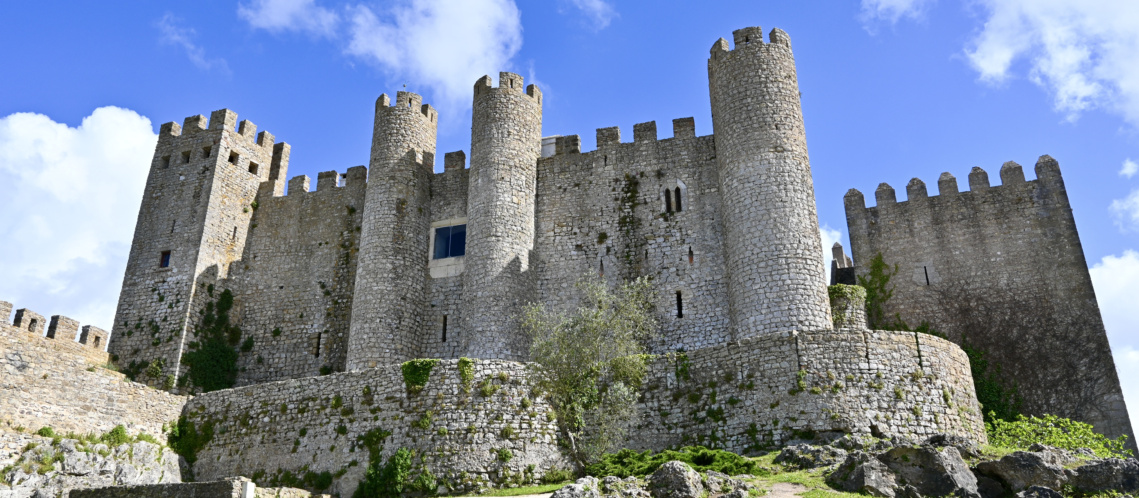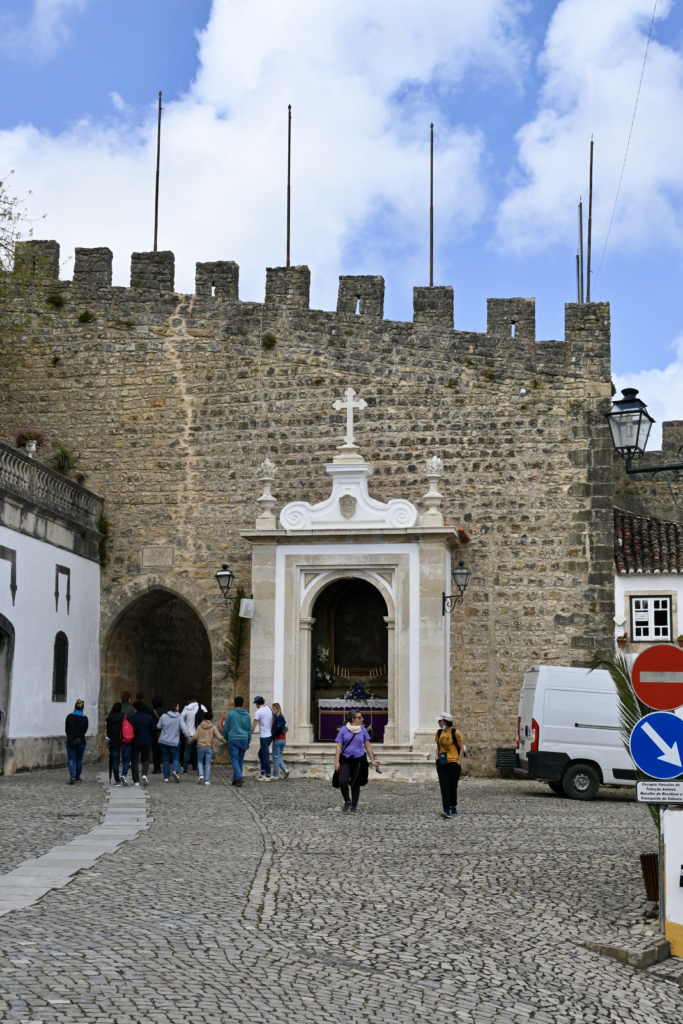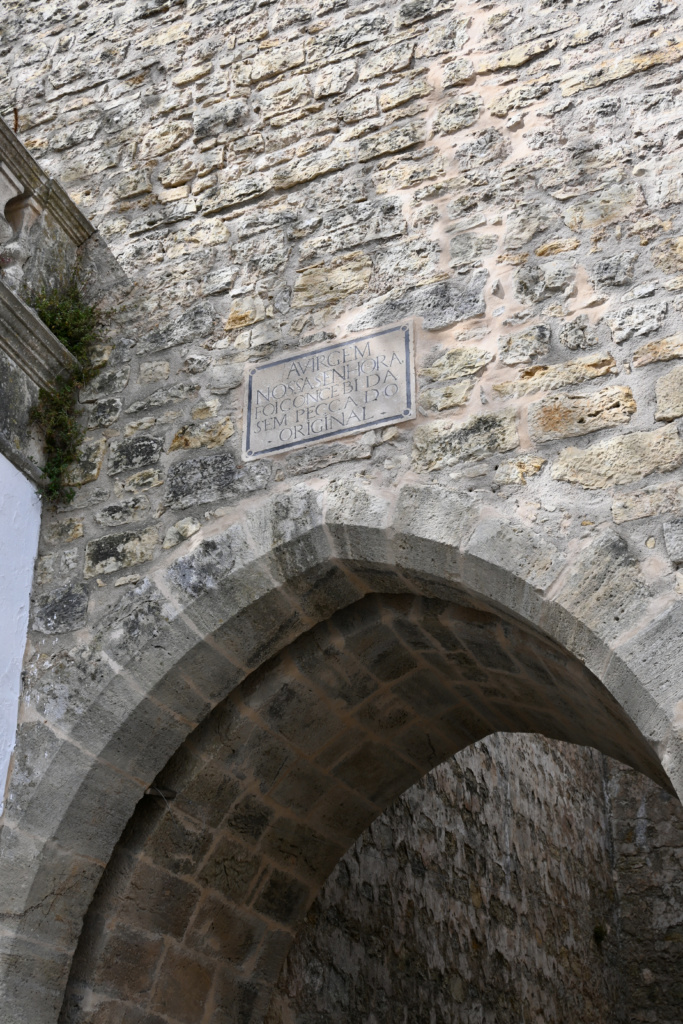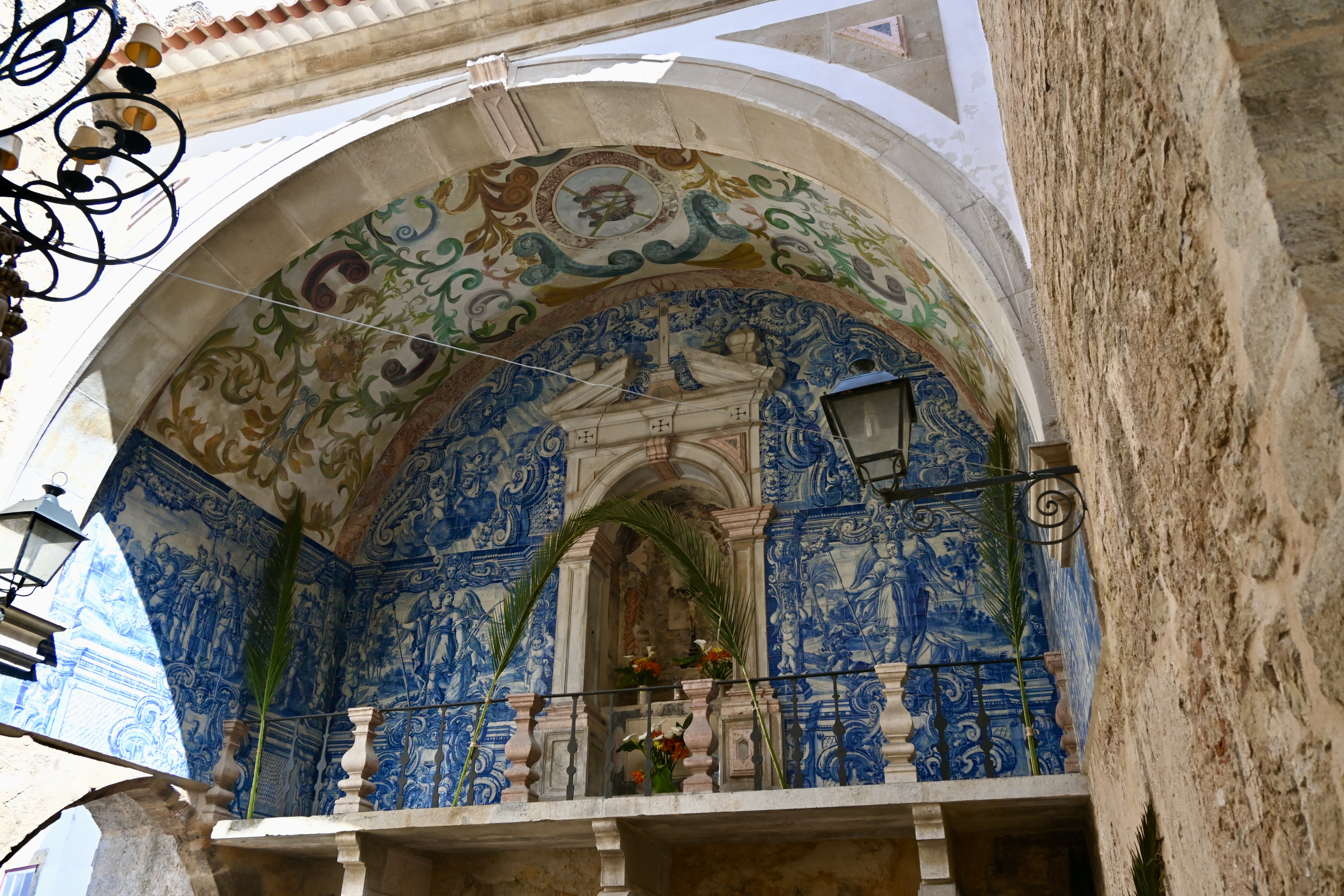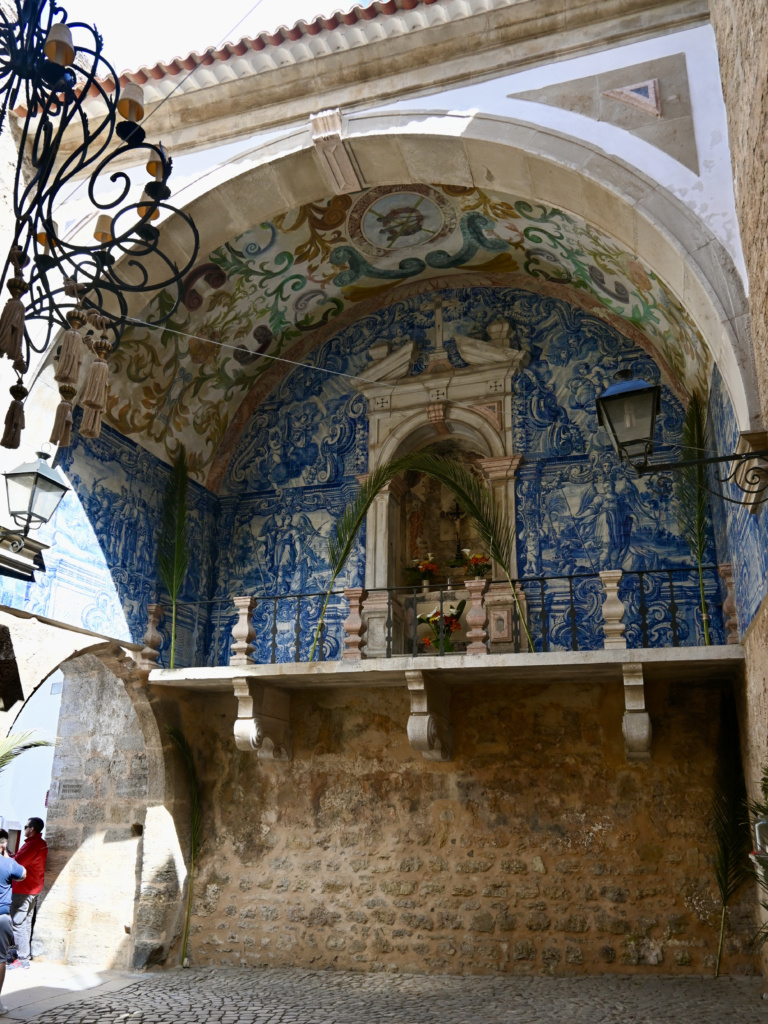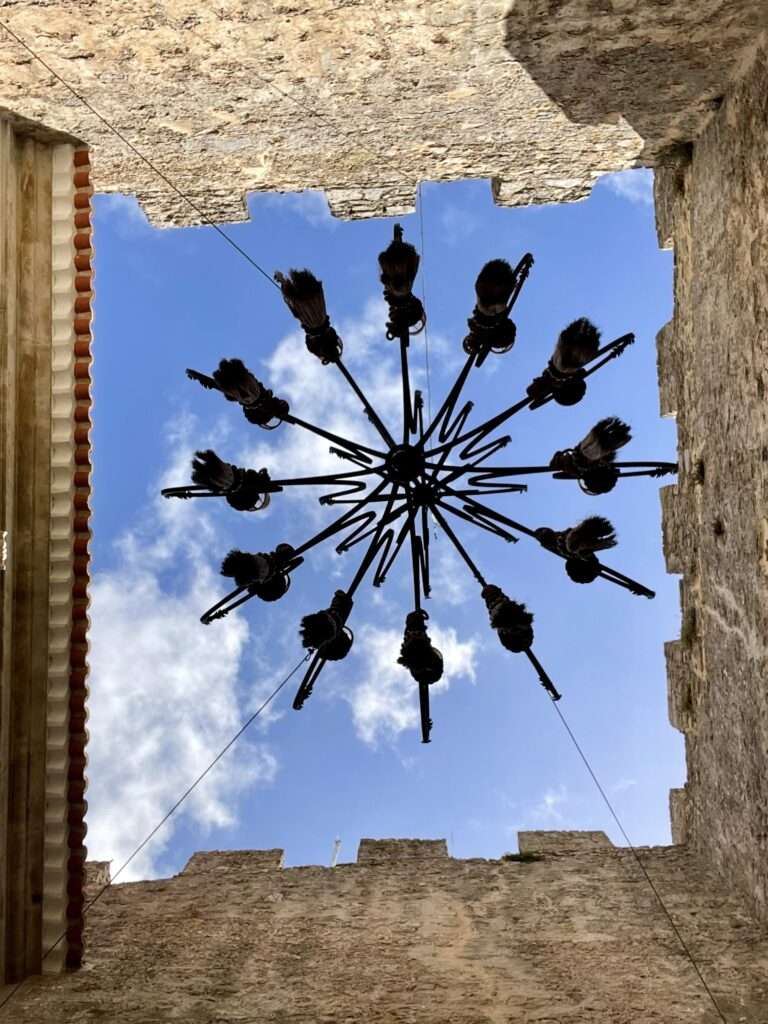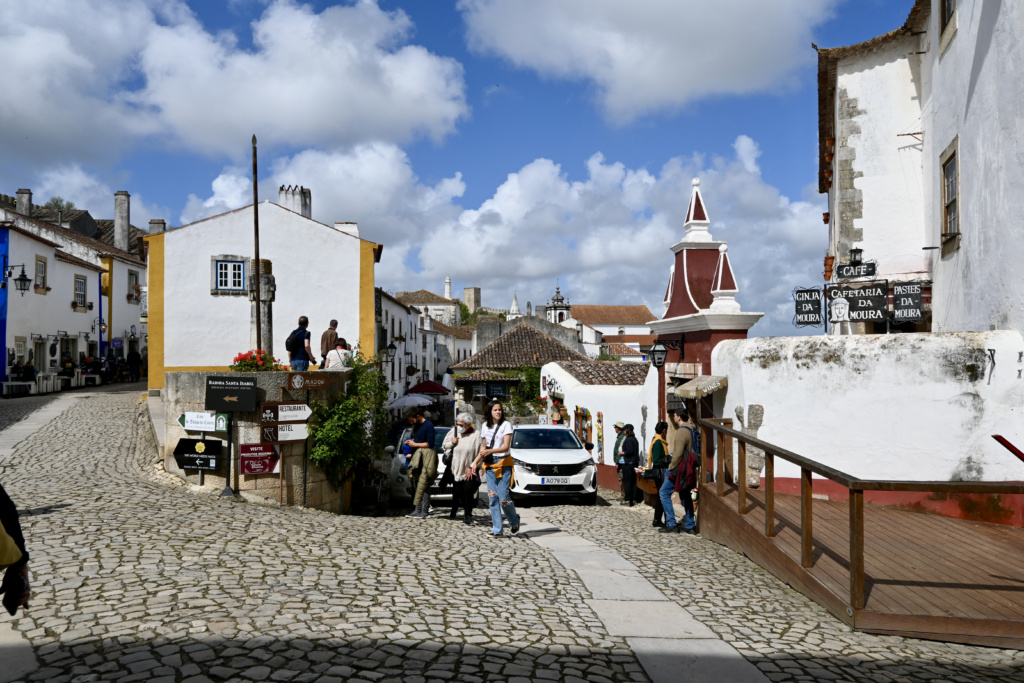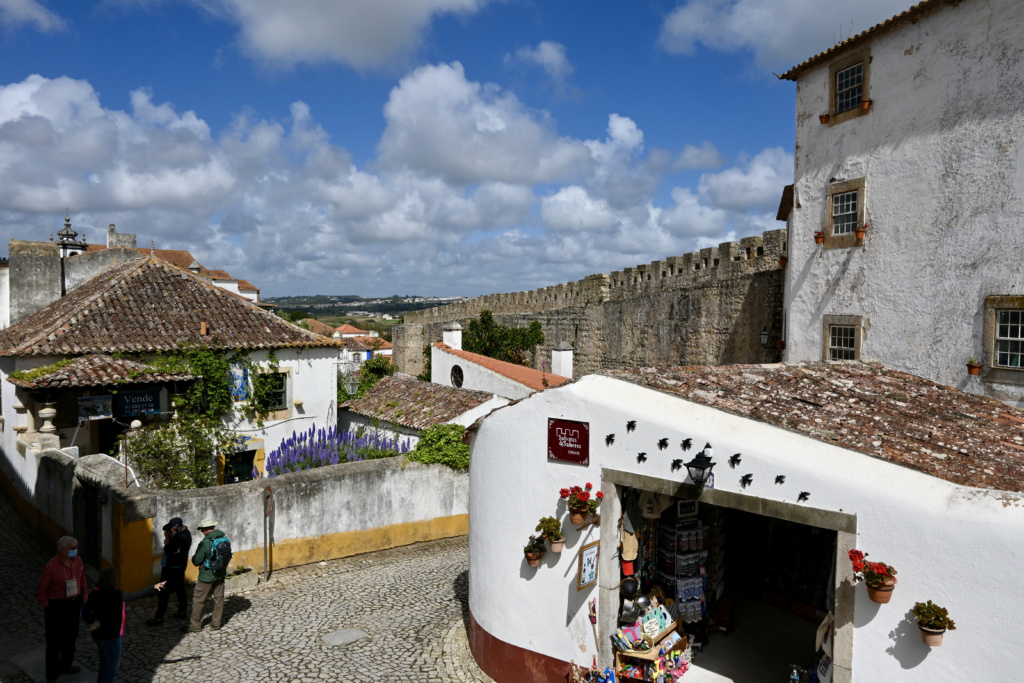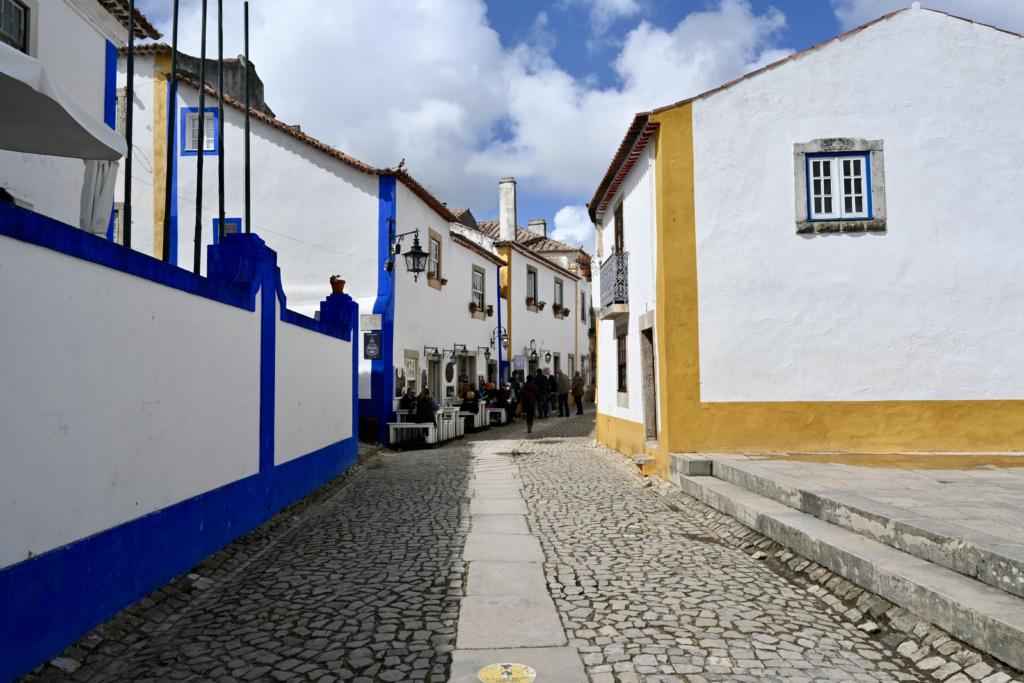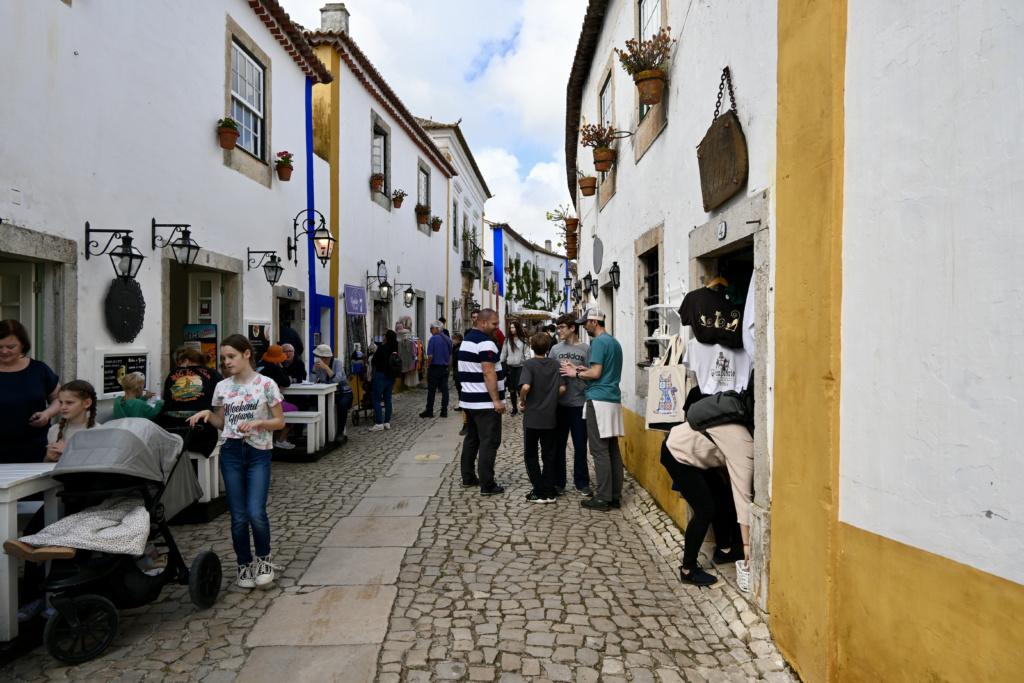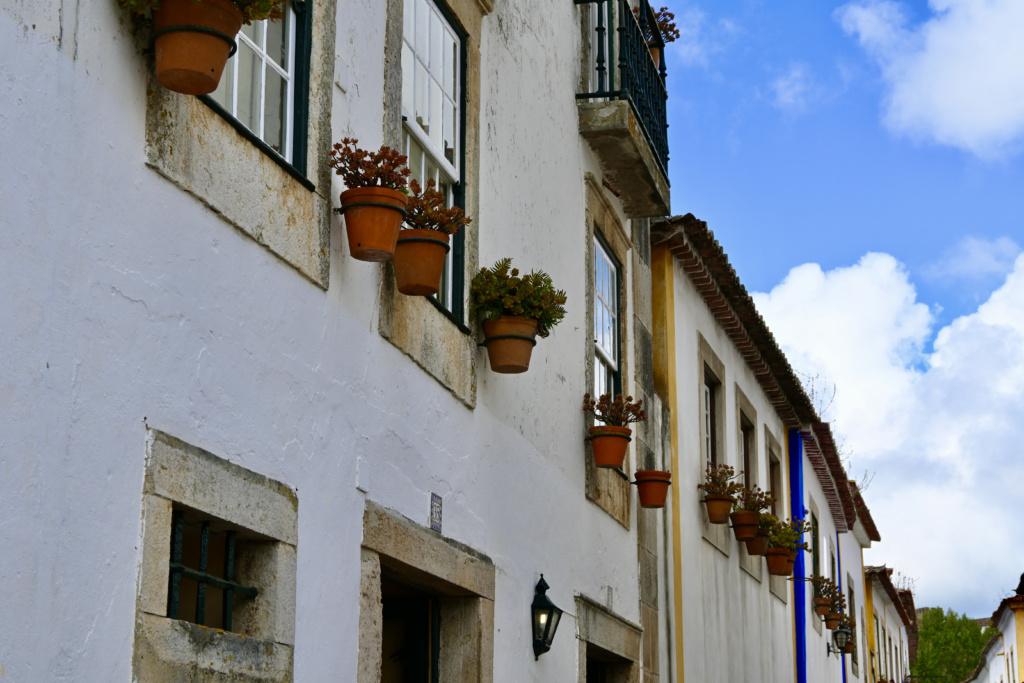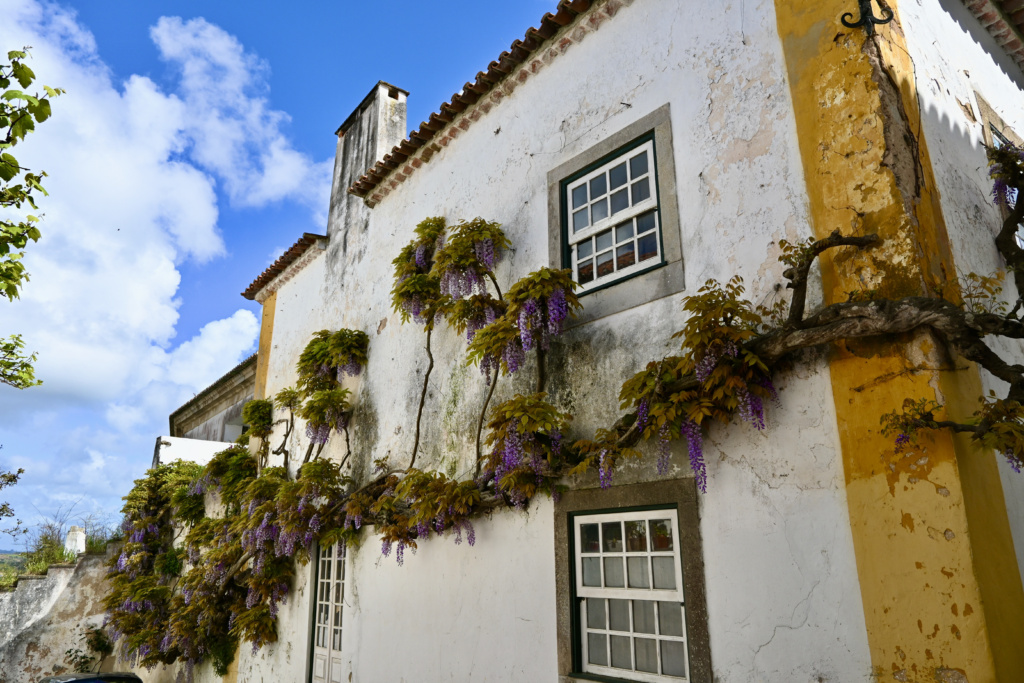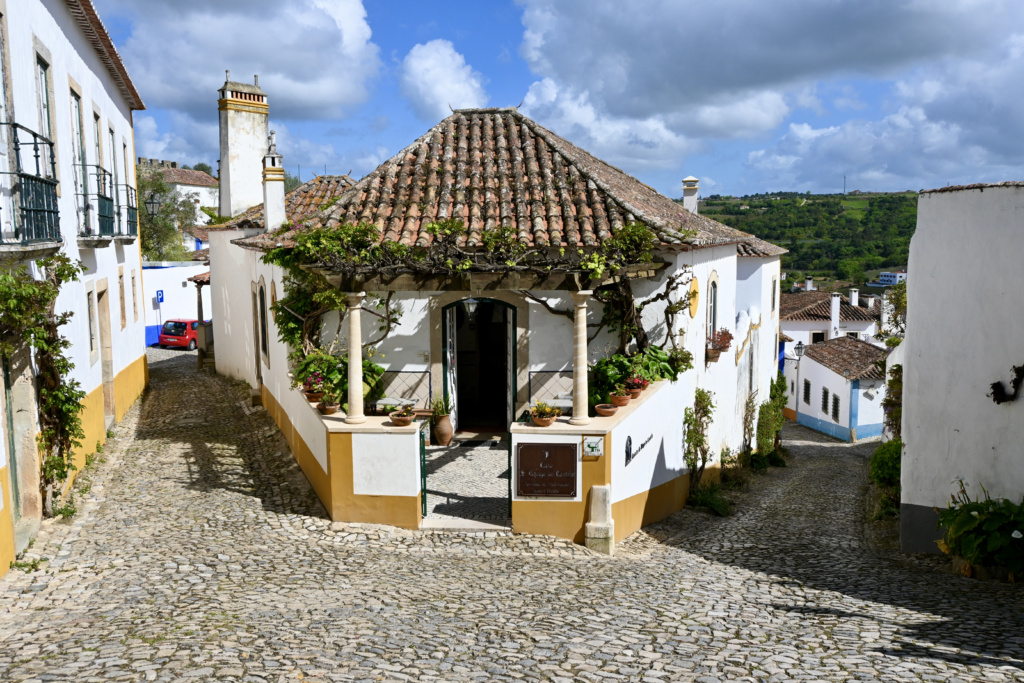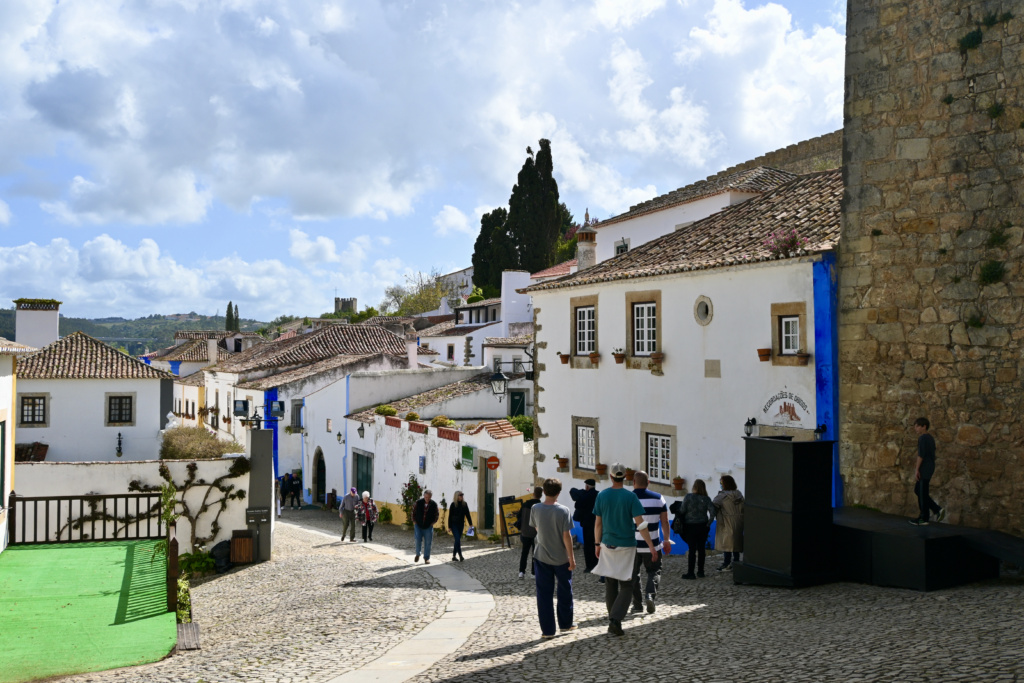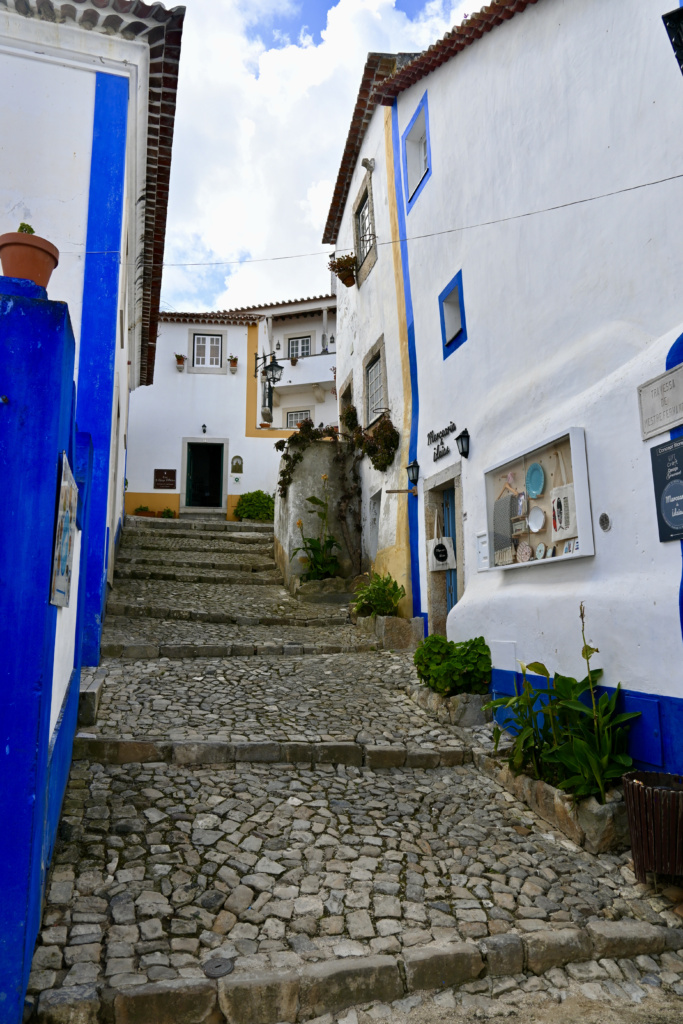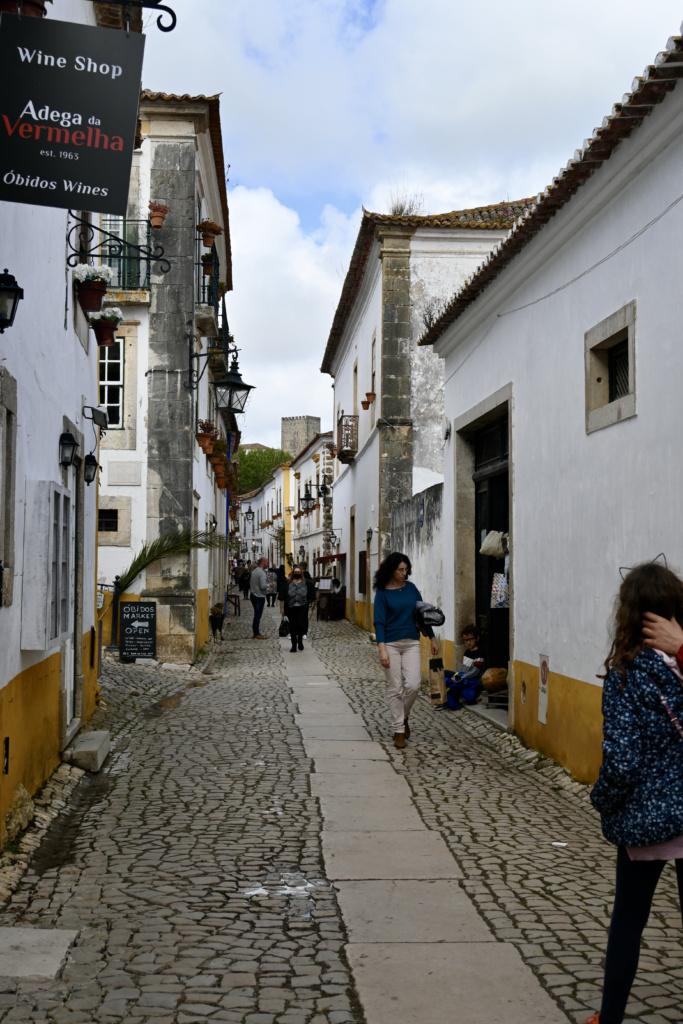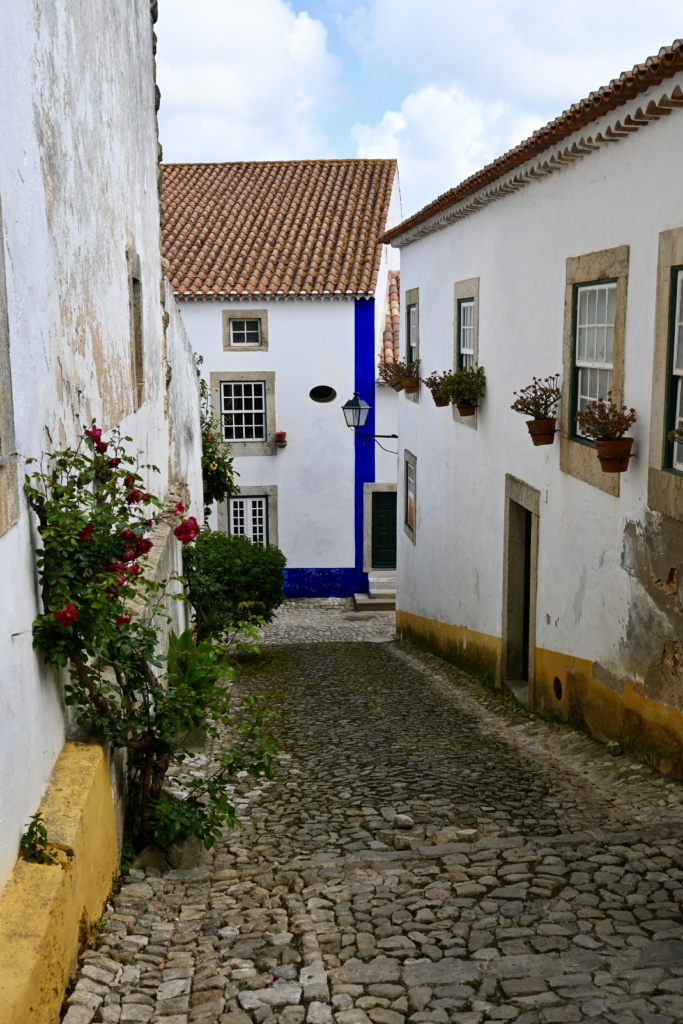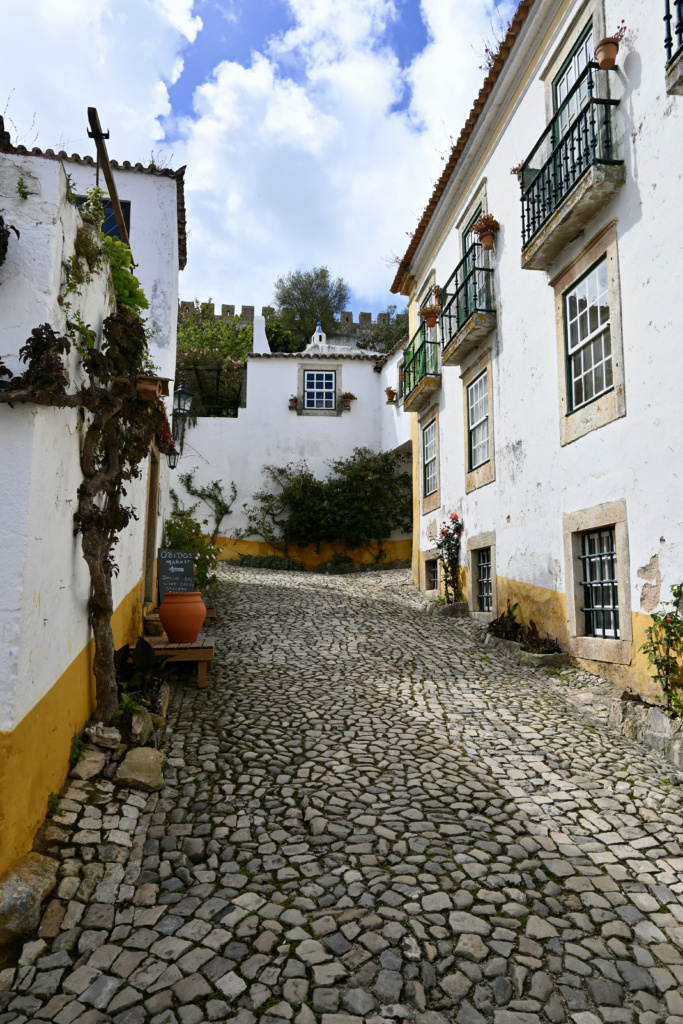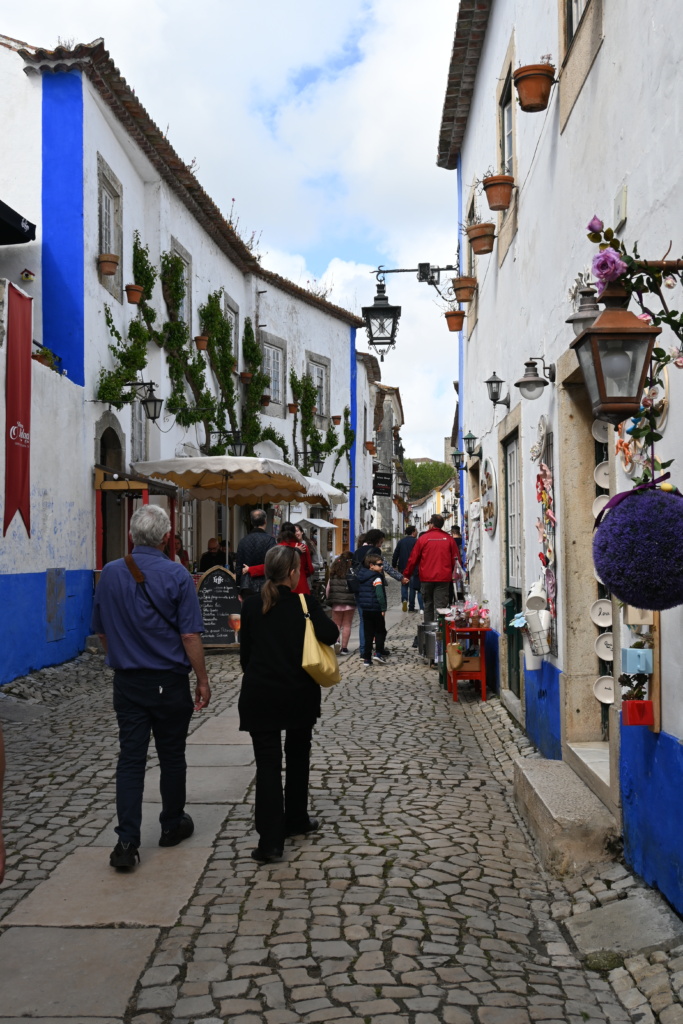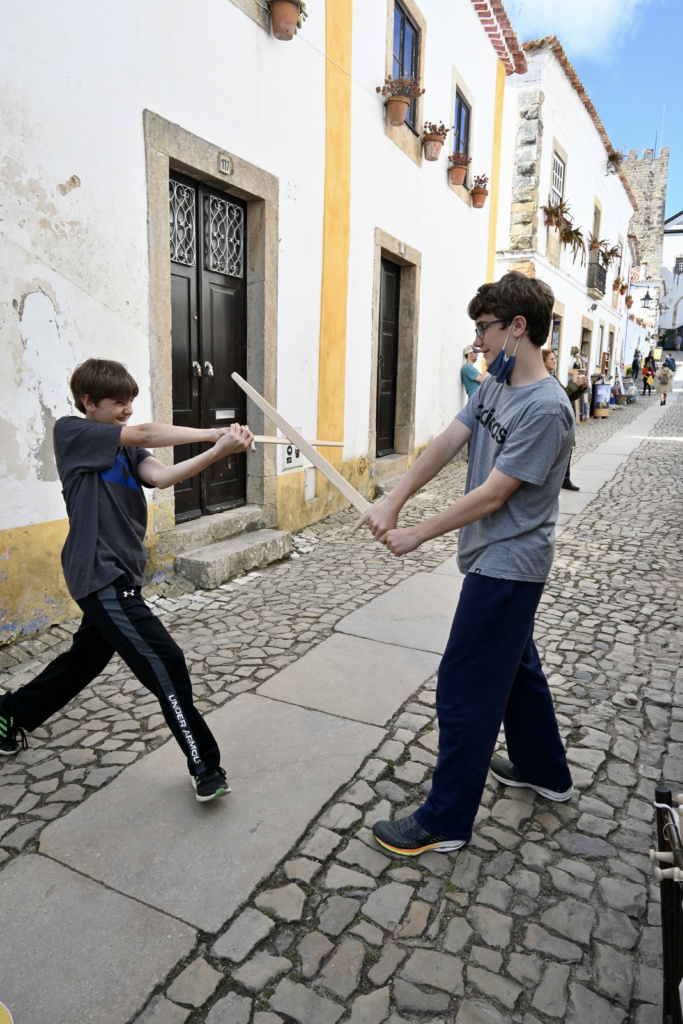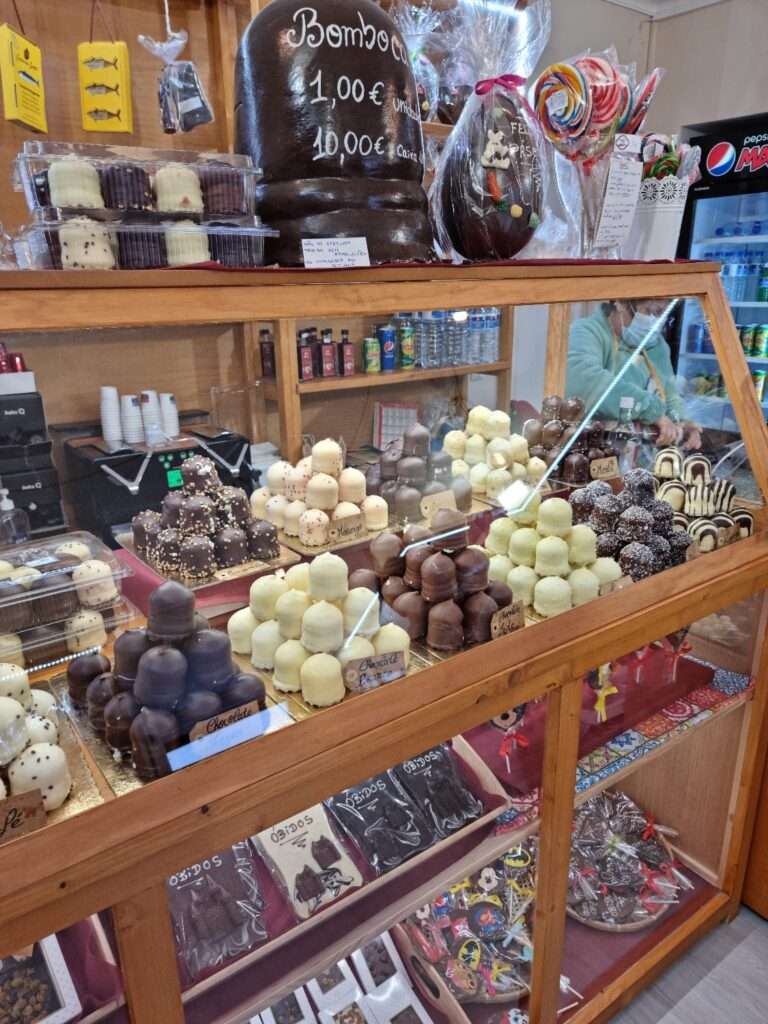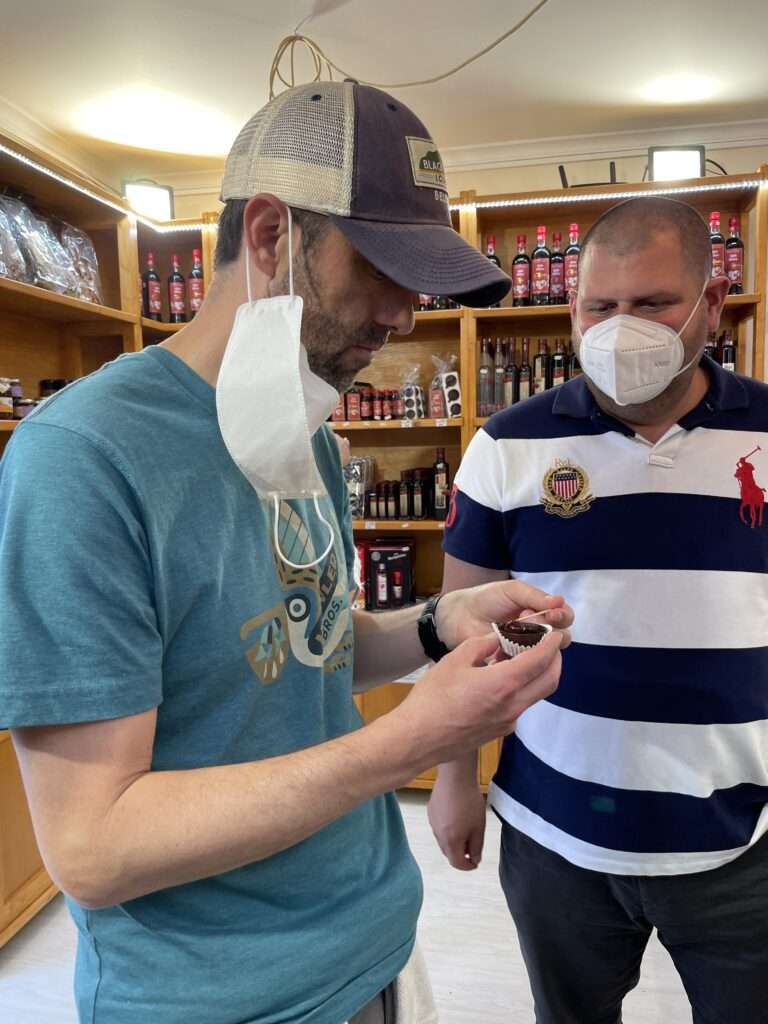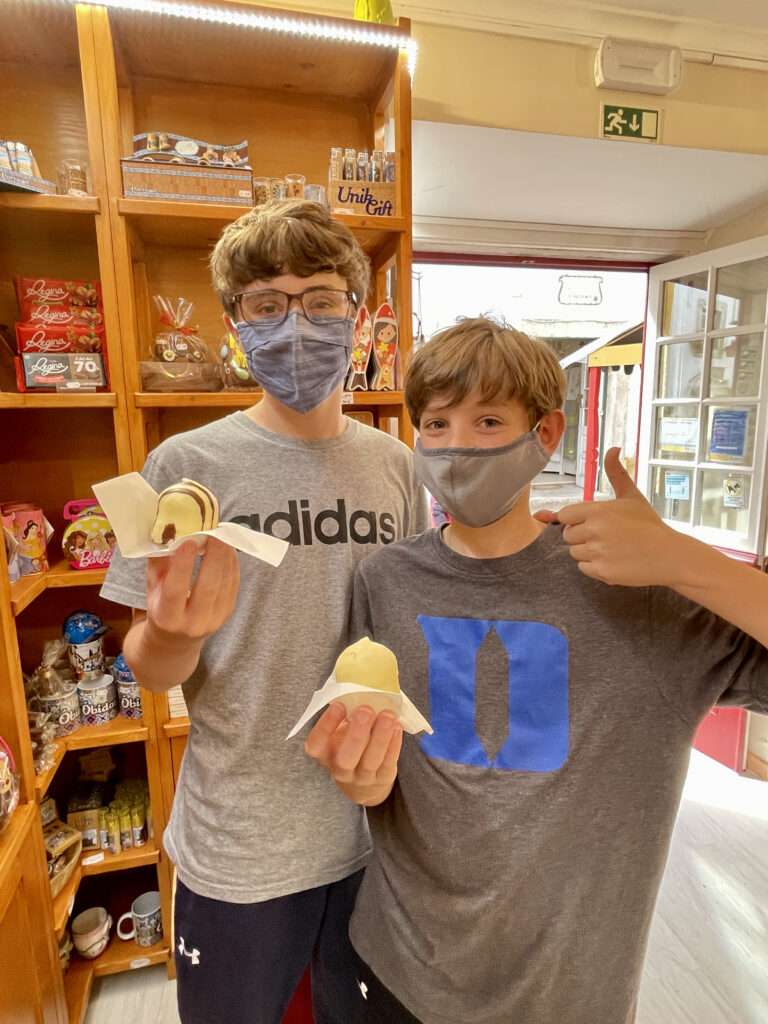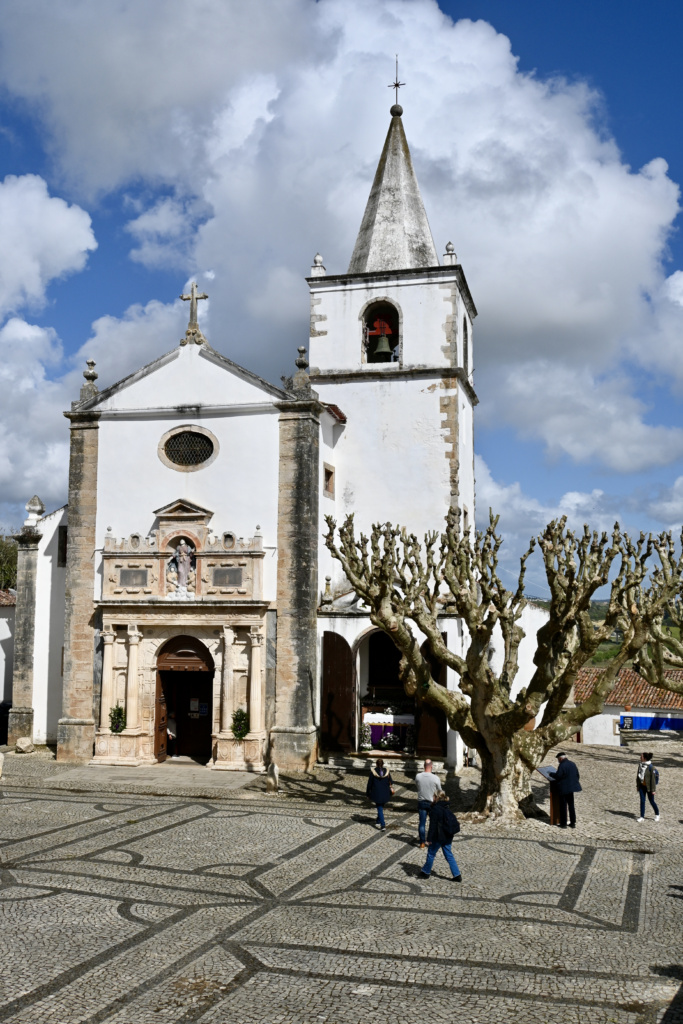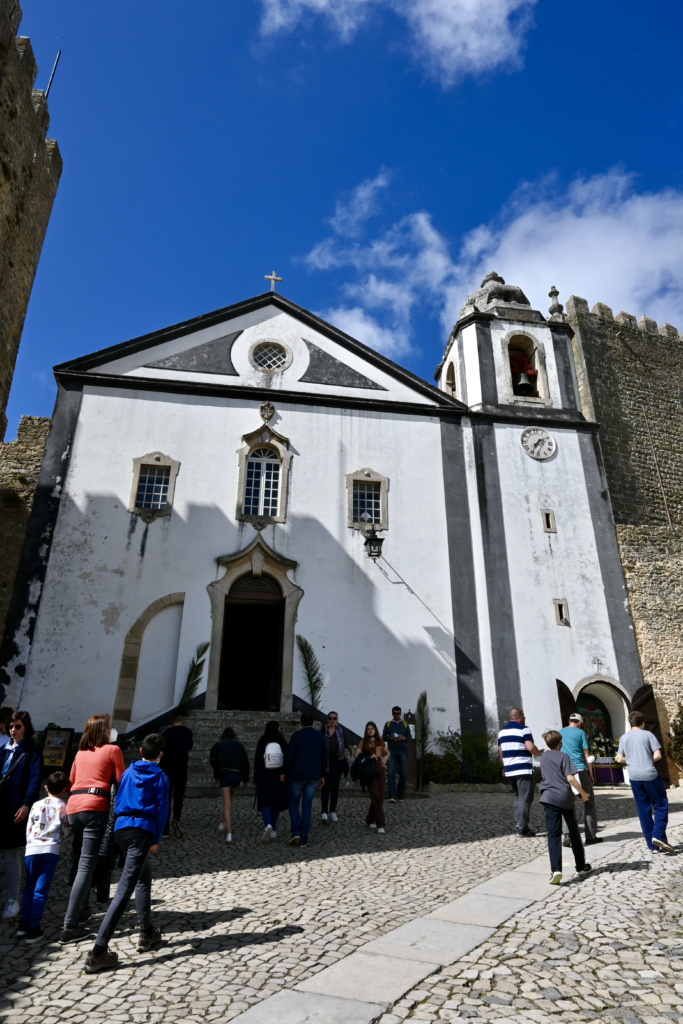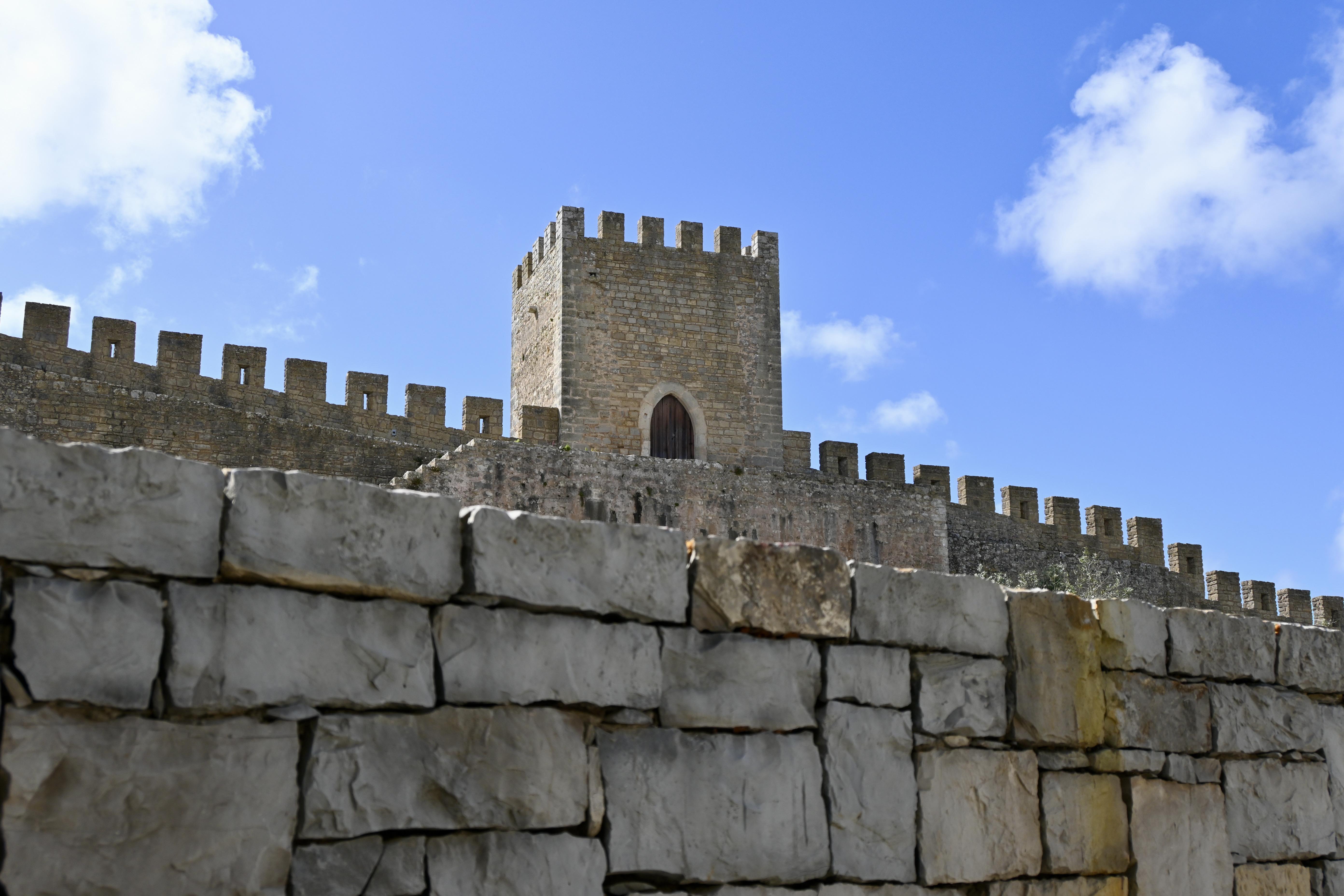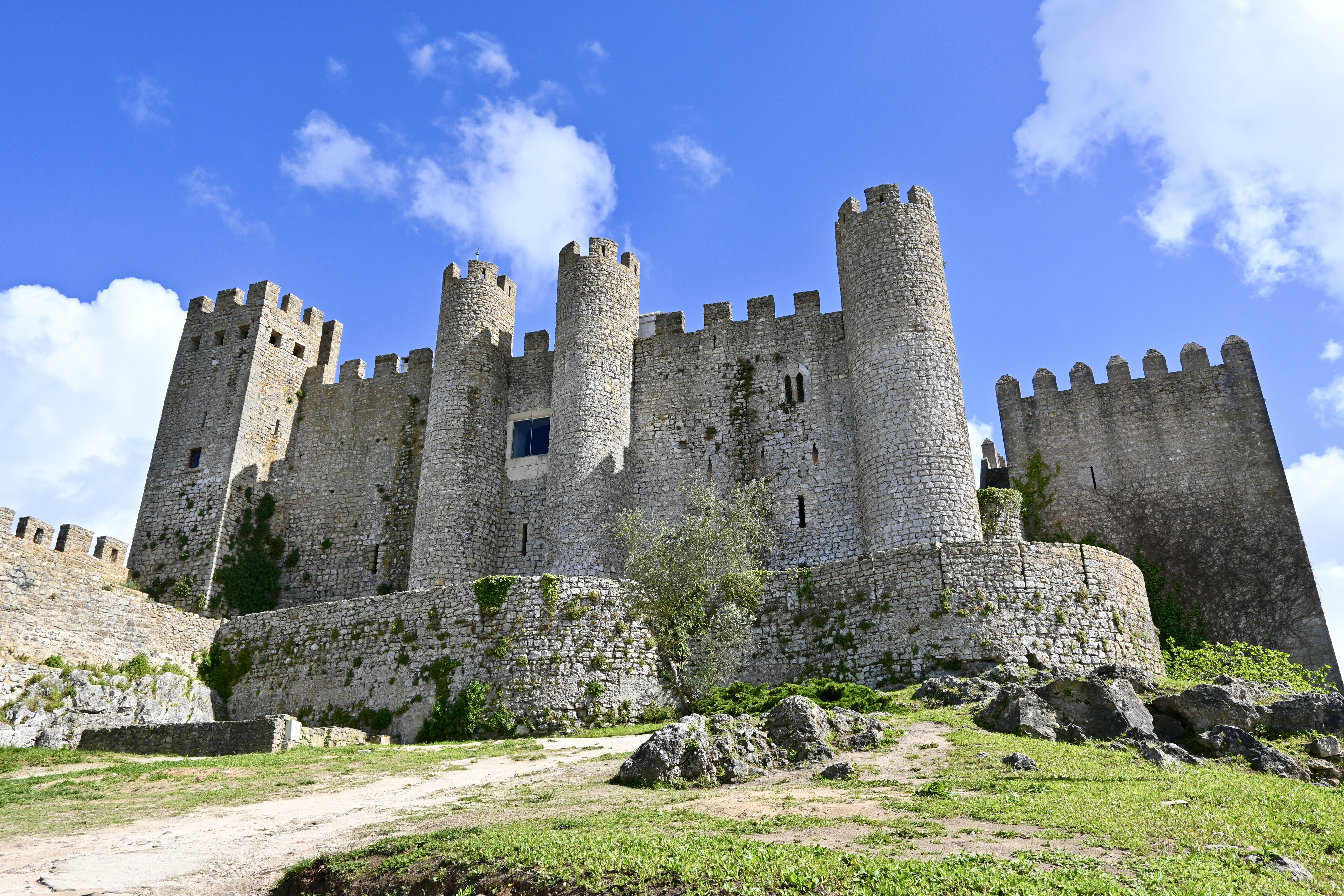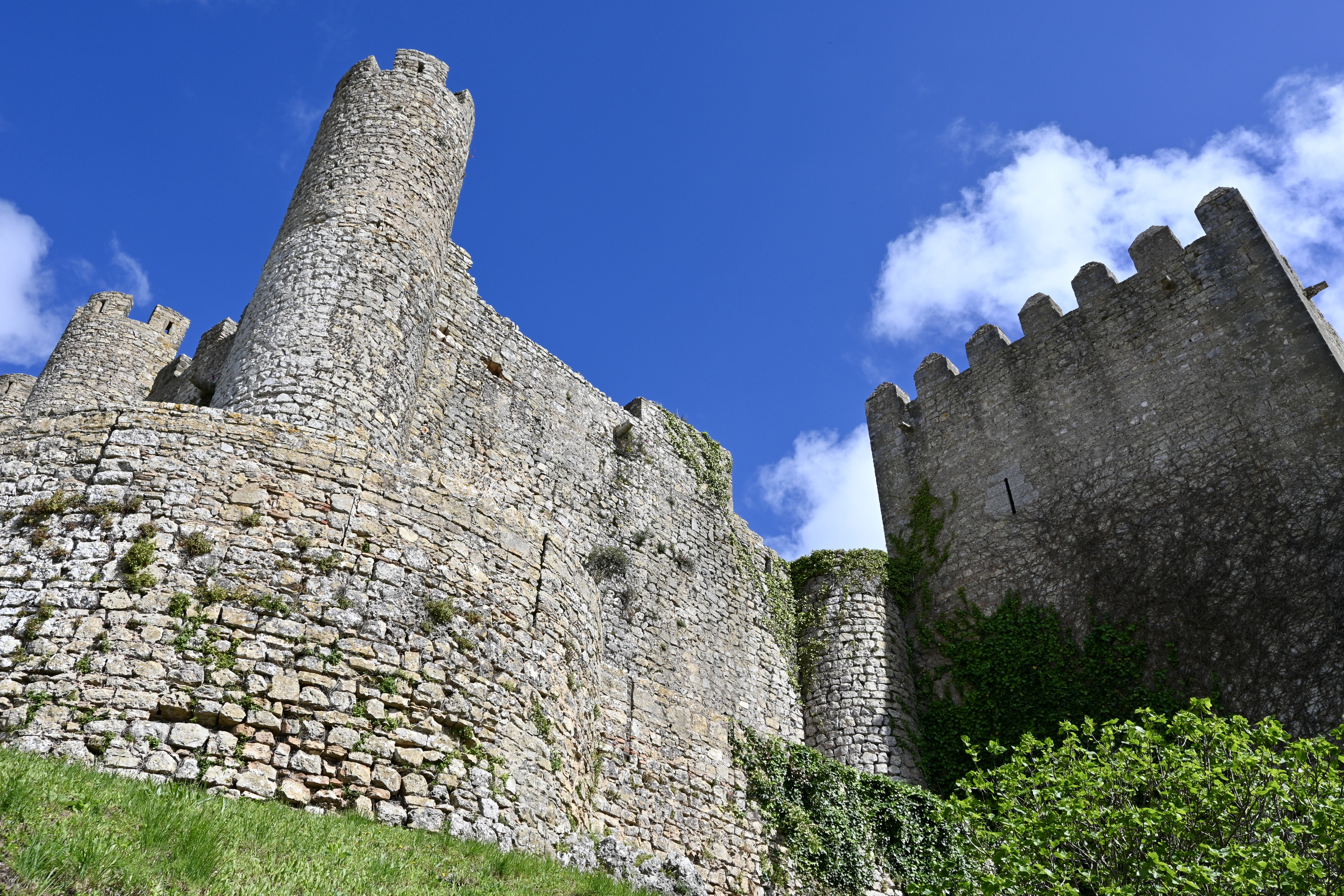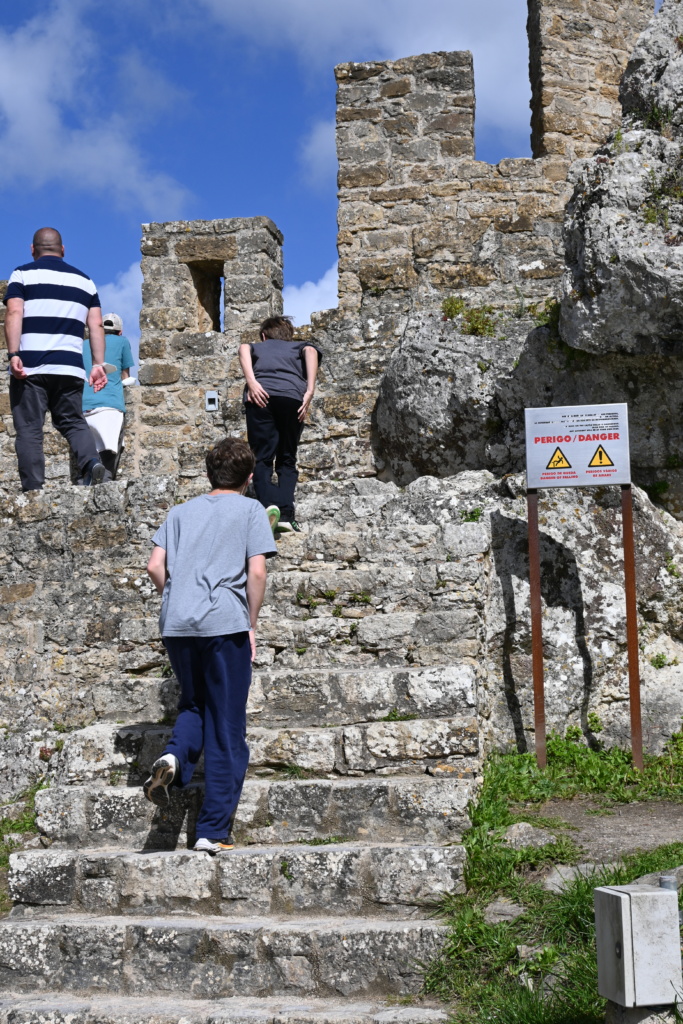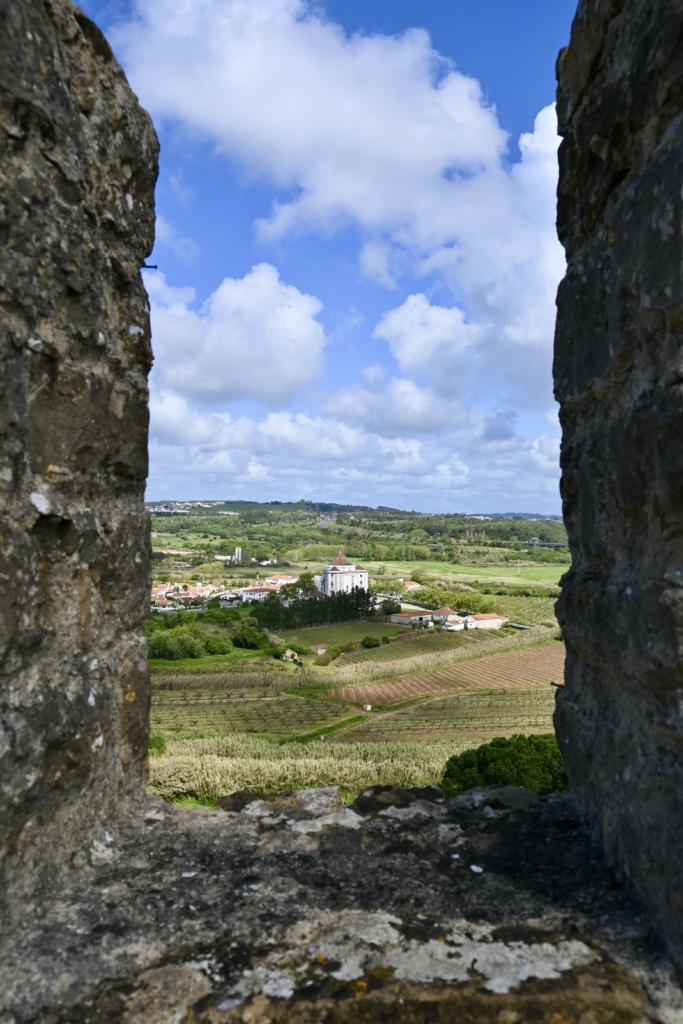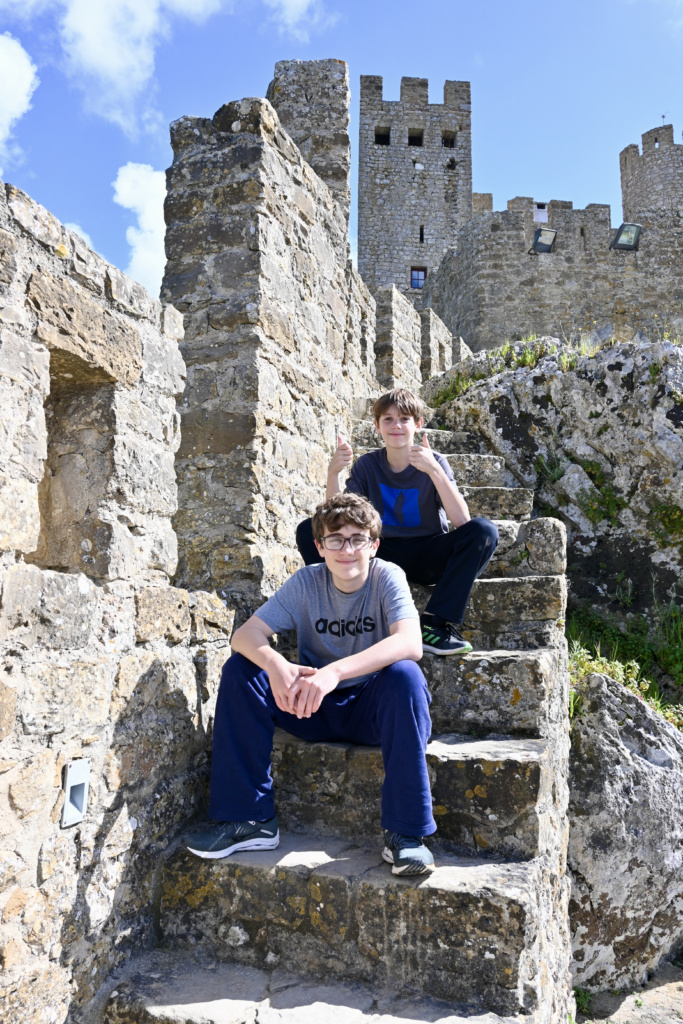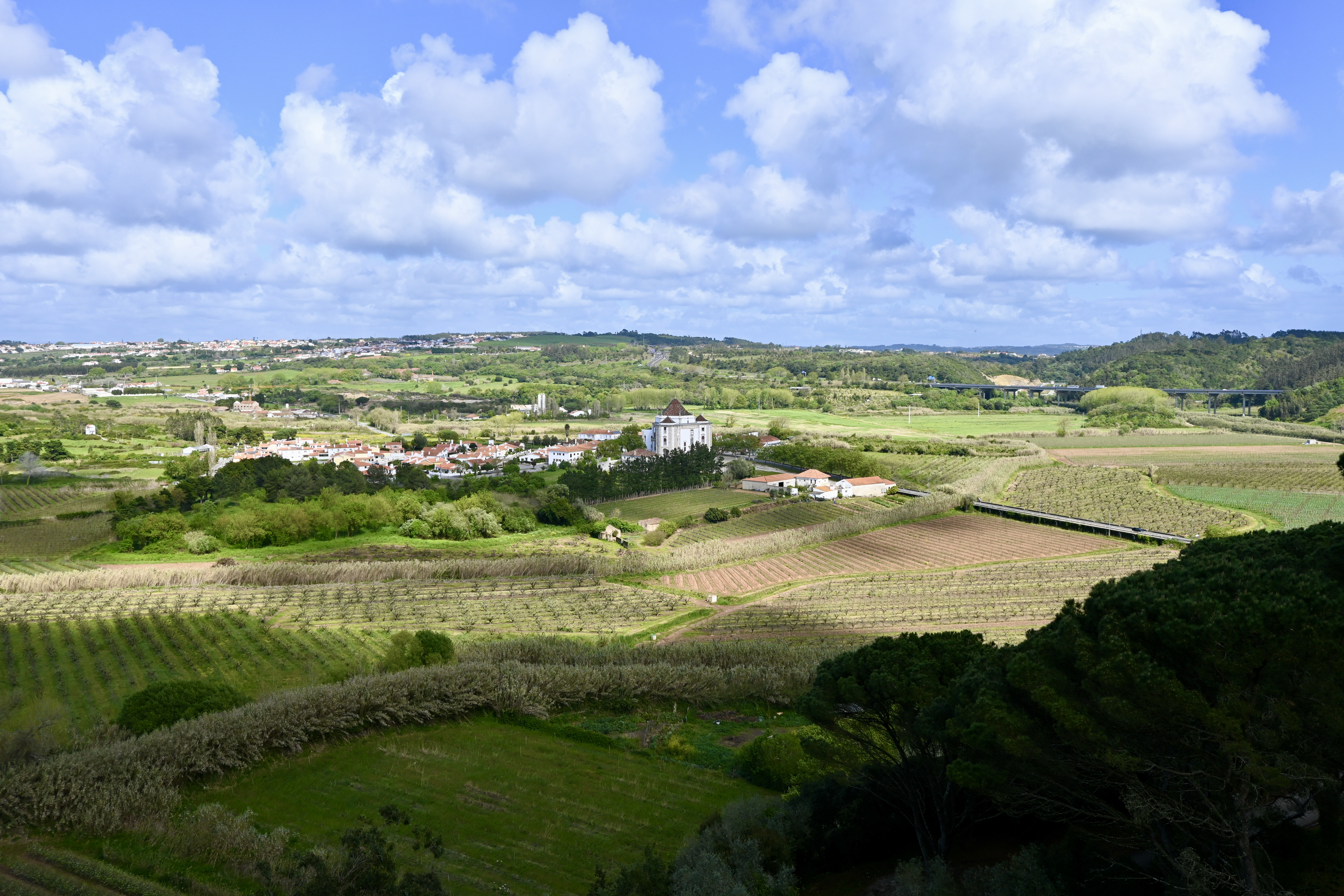Our final stop on our transfer tour from Porto to Sintra was Óbidos. And what a great stop it was. We loved both Aveiro and Nazaré, and Óbidos made it 3 for 3 on this tour. It was amazing!
Óbidos is a medieval walled city that makes you feel as if you have stepped back in time. The walls and castle date back to the Moorish occupation in the 8th century. The city was conquered and annexed into Portugal in 1148. Its charms were evident even at that stage, and King Dinis presented it to his wife Isabel as a wedding gift in 1282. This started a tradition of gifting the town to the new queen on subsequent royal wedding days. This traditional lasted until the 19th century, thus earning the town its nicknames Queens’ Town and Queens’ Present.
We entered the city through its main entrance, Porta da Vila, an unassuming arched opening in the city’s stone outer wall. Above the entryway is the inscription The Virgin Our Lady was conceived without original sin. This inscription was added on orders of King D Joao IV in 1640 following the Restoration of Independence, a revolution in which Portugal broke free from Spanish rule.
The entrance to the city is actually made up of two arched gateways, staggered in an elbow formation in order to defend the city against direct attack. The pretty entryway between the two gates features a balcony oratory decorated with blue and white azulejo tiles depicting the Passion of Christ.
After passing through the second gateway, the town immediately splits into two main cobblestone streets, Rua Direita to the left and Rua Josefa d’Óbidos to the right. The lower street that bears to the right is quieter and lined with restaurants. The upper street is filled with shops and tourists and connects Porta da Vila to Óbidos Castle.
We headed down Rua Direita and it was as quaint and magical as you can possibly imagine. It’s hard to understand how something that is admittedly touristy maintains its charm but somehow it does. The cobblestone streets. The flower pots hanging from the windows. The bright blue and yellow accent stripes on the side of the buildings. The little alleyways bursting with colorful flowers. It all made me fall in love with the city. It didn’t matter that the shops lining the streets were selling wooden swords or overpriced sardines. It still somehow felt medieval and authentic and wonderful.
We stopped in a few shops, wandering in and out the cute storefronts. Óbidos is famous for its ginjinha, a cherry liqueur served in edible chocolate cups, and there were lots of places selling them in the streets or inside their stores. Still remembering the taste of the super strong port wine from our Porto tasting, I passed on the liqueur (although I was tempted just to eat the chocolate cup!). But my husband tried the ginjinha and the kids got chocolate covered marshmallows, and everyone enjoyed their taste of Óbidos.
Aside from the shops and quaint alleyways, two interesting sites along Rua Direita are Igreja de Santa Maria and Igreja de Santiago. The grounds of Igreja de Santa Maria have been transformed over the years – from a Visigothic temple in the 5th century to a mosque in the 8th century to a Christian church in the 12th century. It was the site of the wedding of King Alfonso and Queen Isabel in 1411, who married at the ripe old ages of 10 and 8 years old.
Igreja de Santiago is located at the end of Rua Direita, next to the entrance to the castle. It is built into the castle walls and its white facade stands out against the gray stone walls that abut it. The original church was built in 1186 and was connected directly to the inside of the castle, making it easily accessible to the royal family. The church was destroyed by an earthquake in 1755 and was rebuilt in 1772 in a baroque and neoclassical style that varied from its original Gothic design. Today, the church interior has been converted into a bookstore.
Next to Igreja de Santiago at the end of Rua Direita is Castelo de Óbidos. The castle has Moorish roots in the 8th century but was taken over by Portugal’s first king, Afonso Henriques, in 1148. Henriques’ men split up in their attack. Some men stormed the main gate while others – disguised as cherry trees – snuck up the hillside to attack the castle. The ruse apparently worked and Portugal claimed Óbidos from the Moors. The castle was expanded by various Portuguese kings over the years. Today, it has been converted into a hotel but you can still walk around the castle and along its walls.
There are four staircases that can be used to access the city walls, and we climbed the one behind the castle. Because it was the end of a long day of exploring, we didn’t walk too far along the city walls (you can make a complete loop of the city along its walls) but we enjoyed the view over the countryside and the novelty of walking for a bit on Moorish walls that have stood since the early 8th century.
Our visit to Óbidos was a wonderful end to a fantastic day. It felt magical to have this adorable little town hidden behind the old Moorish walls. It was a unique experience to walk along its cobblestone streets to get to the castle and its gorgeous views.
Overall I think this was my favorite day in Portugal. I loved that we got to see three such unique places. The canals of Aveiro. The waves of Nazaré. The walled city of Óbidos. What incredibly diverse experiences all so geographically close to each other! I highly recommend taking the time to stop and visit these (and other) amazing places in between Porto and Lisbon.
